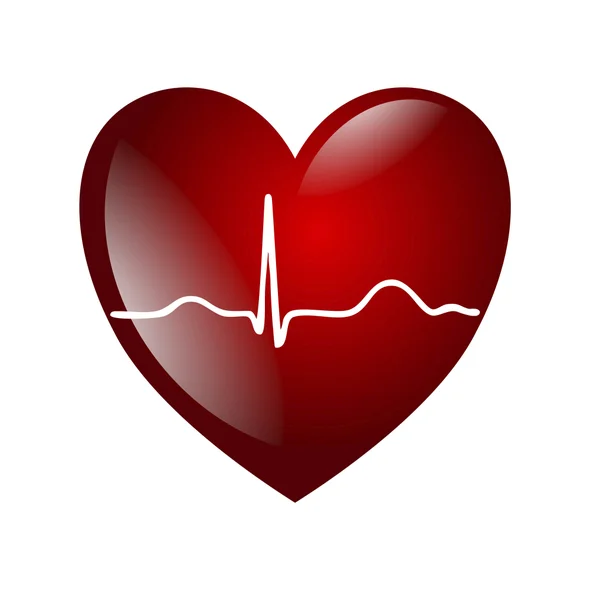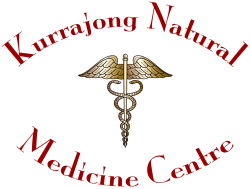Hypertension (High Blood Pressure) - A Chinese Medicine Perspective
What is Hypertension
According to the Mayo Clinic [1], “high blood pressure (hypertension) is a common condition in which the long-term force of the blood against your artery walls is high enough that it may eventually cause health problems, such as heart disease.
Blood pressure (BP) is determined both by the amount of blood your heart pumps and the amount of resistance to blood flow in your arteries. The more blood your heart pumps and the narrower your arteries, the higher your blood pressure. A BP reading is given in millimetres of mercury (mm Hg). It has two numbers [1].
- Systolic Blood Pressure (SBP): Is the higher number in a blood pressure reading and represents the pressure exerted on the arterial walls when the heart contracts and pumps blood out into the arteries. During this phase, the heart muscle contracts, pushing blood into the circulation. SBP is measured in millimetres of mercury (mmHg) and is the first number reported in a blood pressure reading. For example, in a reading of 120/80 mmHg, 120 represents the systolic blood pressure.

- Diastolic Blood Pressure (DBP): Is the lower number in a BP reading and represents the pressure in the arteries when the heart is at rest between contractions. It reflects the resistance of the arterial walls to the flow of blood. During this phase, the heart muscle relaxes and fills with blood for the next contraction. DBP is also measured in mmHg and is the second number reported in a blood pressure reading. In the example above, 80 represents the DBP.
You can have high blood pressure (HBP) for years without any symptoms. Uncontrolled HBP increases your risk of serious health problems, including heart attack and stroke. Fortunately, it can be easily detected. And once you know you have elevated blood pressure, you can work with your doctor to control it.
Most people with HBP have no signs or symptoms, even if readings reach dangerously high levels.
A few people may have headaches, shortness of breath or nosebleeds, but these signs and symptoms aren’t specific and usually don’t occur until BP has reached a severe or life-threatening level” [1].
How Does Traditional Chinese Medicine (TCM) View Hypertension
Qi and Blood Stagnation: Chinese medicine views hypertension as a result of stagnant Qi or blood circulation. When the Qi and blood do not flow smoothly, they can accumulate and create excessive pressure on the blood vessels, leading to high blood pressure (HBP). Treatment strategies aim to promote the smooth flow of Qi and blood.
Yin-Yang Imbalance: Chinese medicine also emphasizes the concept of Yin and Yang, which represent opposing yet complementary forces in the body. HBP is often associated with an excess of Yang energy, which can result from factors such as stress, excessive physical activity, or a diet high in stimulating foods. Treatment focuses on restoring the balance between Yin and Yang to regulate blood pressure.
Organ Systems: In Chinese medicine, different organs and meridian systems are believed to be involved in HBP. The Liver is commonly associated with the smooth flow of Qi and blood, and its imbalance can contribute to elevated blood ressure. Other organs, such as the Kidneys, Heart, and Spleen, may also be assessed and treated depending on the individual’s pattern of disharmony.
Acupuncture: Acupuncture is a widely used treatment modality in Chinese medicine. Fine needles are inserted into specific acupuncture points to stimulate the flow of Qi and blood, regulate organ function, and promote overall balance in the body. Acupuncture can help reduce blood pressure by addressing the underlying imbalances contributing to HBP.
Herbal Medicine: Chinese herbal formulas are often prescribed to address hypertension. The selection of herbs is based on the individual’s specific patterns of disharmony, as determined by a qualified Chinese medicine practitioner. Herbs with properties that promote relaxation, support organ function, and regulate blood flow may be included in the formulas.
Lifestyle and Dietary Recommendations: Chinese medicine emphasizes the importance of a healthy lifestyle and dietary choices in managing hypertension. Recommendations may include stress reduction techniques such as Tai Chi, Qi Gong, or meditation, as well as dietary modifications that focus on reducing excessive Yang energy, such as avoiding spicy or greasy foods and increasing consumption of cooling foods like vegetables and fruits.
What You Can Do to Help Reduce Hypertension
Eat a balanced and healthy diet: Adopting the Dietary Approaches to Stop Hypertension (DASH) eating plan can be beneficial. This diet emphasizes fruits, vegetables, whole grains, lean proteins, and low-fat dairy products while reducing sodium, saturated fats, and added sugars.
Reduce sodium intake: Limiting your sodium (salt) intake is crucial for managing cardiovascular disease. Aim to consume no more than 2,300 milligrams (mg) of sodium per day, and even less if advised by your healthcare provider.
Maintain a healthy weight: Losing excess weight can significantly help reduce BP. If you are overweight or obese, even a small weight loss can have a positive impact.
Engage in regular physical activity: Regular exercise can help lower blood pressure. Aim for at least 150 minutes of moderate-intensity aerobic activity or 75 minutes of vigorous-intensity aerobic activity per week. Additionally, include strength training exercises at least two days a week.
Limit alcohol consumption: Excessive alcohol consumption can raise BP. If you choose to drink, do so in moderation. For men, moderate drinking is generally considered up to two standard drinks per day, while for women, it’s up to one standard drink per day.
Quit smoking: Smoking can contribute to the development of hypertension and other cardiovascular problems. Quitting smoking is one of the most significant steps you can take to improve your overall health.
Manage stress: Chronic stress can increase blood pressure. Find healthy ways to manage stress, such as engaging in relaxation techniques (e.g., deep breathing, meditation, yoga), participating in hobbies, or seeking support from friends and family.
Limit caffeine intake: While the impact of caffeine on blood pressure varies from person to person, it may temporarily increase blood pressure. Monitor your caffeine consumption and consider reducing it if you notice an adverse effect.
Monitor blood pressure regularly: Keep track of your blood pressure at home using a home blood pressure monitor. Regular monitoring can help you and your healthcare provider understand how your lifestyle changes are affecting your blood pressure.
Follow prescribed medication and treatment plans: If your healthcare provider has prescribed medication to manage hypertension, take it as directed. Follow all recommended treatment plans and attend regular check-ups to monitor your progress.
References
1. Mayo Clinic (2021) High blood pressure (hypertension). URL: https://www.mayoclinic.org/diseases-conditions/high-blood-pressure/symptoms-causes/syc-20373410 last visited: 10th July 2021
2.Wang, J., Xiong, X., & Liu, W. (2013). Acupuncture for essential hypertension. International journal of cardiology, 169(5), 317–326. https://doi.org/10.1016/j.ijcard.2013.09.001
3. Tan, X., Pan, Y., Su, W., Gong, S., Zhu, H., Chen, H., & Lu, S. (2019). Acupuncture therapy for essential hypertension: a network meta-analysis. Annals of translational medicine, 7(12), 266. https://doi.org/10.21037/atm.2019.05.59]
4. Fan, H., Yang, J. W., Wang, L. Q., Huang, J., Lin, L. L., Wang, Y., Zhang, N., & Liu, C. Z. (2020). The Hypotensive Role of Acupuncture in Hypertension: Clinical Study and Mechanistic Study. Frontiers in aging neuroscience, 12, 138. https://doi.org/10.3389/fnagi.2020.00138
5. Zheng, H., Li, J., Li, Y., Zhao, L., Wu, X., Chen, J., Li, X., Huang, Y. L., Chang, X. R., Liu, M., Cui, J., Wang, R. H., Du, X., Shi, J., Guo, T. P., & Liang, F. R. (2019). Acupuncture for patients with mild hypertension: A randomized controlled trial. Journal of clinical hypertension (Greenwich, Conn.), 21(3), 412–420. https://doi.org/10.1111/jch.13490
6. Marciocia, G. (1994) The Practice of Chinese Medicine: The Treatment of Disease with Acupuncture and Chinese Herbs, Edinburgh: Elsevier Churchill Livingstone.
Disclaimer
Disclaimer information for users of the Kurrajong Natural Medicine Centre, Namaste Yoga Kurrajong and The Herbal Health Coach website.
Page last updated: 24th June 2023
Information provided for education and research information only
The information on this website is presented by Kurrajong Natural Medicine Centre for the purpose of disseminating health information free of charge for the benefit of the public.
While Kurrajong Natural Medicine Centre has exercised due care in ensuring the accuracy of the material contained on this website, the information on the site is made available on the basis that Kurrajong Natural Medicine Centre is not providing professional advice on a particular matter.
This website is not a substitute for independent professional advice. Nothing contained in this site is intended to be used as medical advice and it is not intended to be used to diagnose, treat, cure or prevent any disease, nor should it be used for therapeutic purposes or as a substitute for your own health professional’s advice.
Kurrajong Natural Medicine Centre does not accept any liability for any injury, loss or damage incurred by use of or reliance on the information provided on this website.
Quality of information
Kurrajong Natural Medicine Centre makes every effort to ensure the quality of the information available on this website and updates the information regularly. Before relying on the information on this site, however, users should carefully evaluate its accuracy, currency, completeness and relevance for their purposes, and should obtain any appropriate professional advice relevant to their particular circumstances. Kurrajong Natural Medicine Centre cannot guarantee and assumes no legal liability or responsibility for the accuracy, currency, completeness or interpretation of the information.
The material may include the views or recommendations of third parties and does not necessarily reflect the views of Kurrajong Natural Medicine Centre or indicate a commitment to a particular course of action.
Links to other websites
This website contains links to other websites which are external to Kurrajong Natural Medicine Centre. Kurrajong Natural Medicine Centre takes reasonable care in selecting linking websites but Kurrajong Natural Medicine Centre accepts no responsibility for material contained in a website that is linked to this site. It is the responsibility of the user to make their own decisions about the accuracy, currency, reliability and correctness of information contained in linked external websites.
Links to external websites are provided for the user’s convenience and do not constitute an endorsement or a recommendation of any third party products or services offered by virtue of any information, material or content linked from or to this site. Users of links provided by this site are responsible for being aware of which organisation is hosting the site they visit.
Views or recommendations provided in linked sites may include the views or recommendations of third parties and do not necessarily reflect those of Kurrajong Natural Medicine Centre or indicate a commitment to a particular course of action. .



